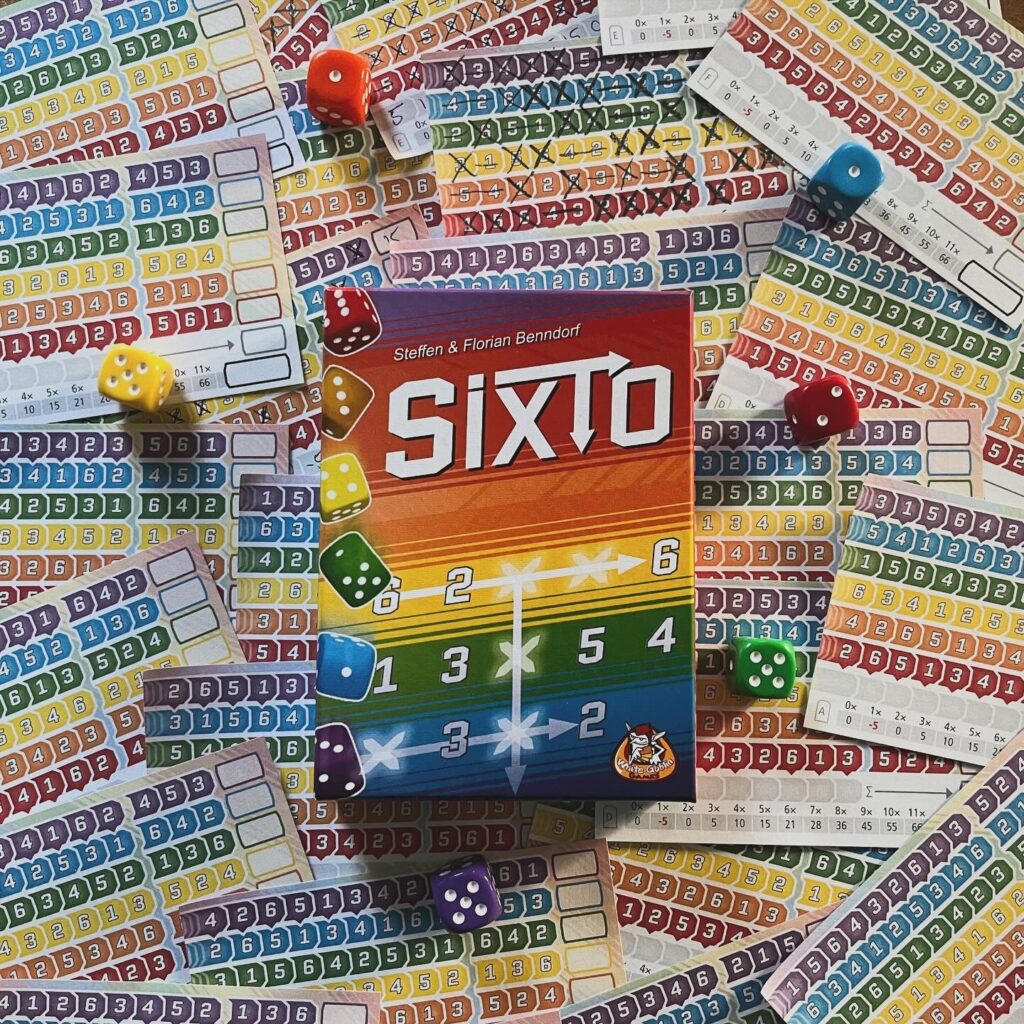Everyone knows the dice game Qwixx. In this simple dice game, players try to use two white dice and four colored dice to fill in the squares on their sheet from left to right and earn the most points and block other players by “shutting down” dice. Qwixx contributed to the revival of dice games and because of its simplicity and excitement, it is still very popular. I always bring along some colored dice and score sheets to play Qwixx, among other games, during the trips. The designer of Qwixx together with a co-designer has come up with a new dice game called Sixto. A lot is very familiar, yet a whole lot is different. Will it manage to match Qwixx?

Just like in Qwixx, players in Sixto are going to try to fill in the squares on their score sheet from left to right. Let’s make the comparison with Qwixx right away. Unlike Qwixx, there are no white dice available, players do not make combinations between the white dice and a white and colored dice, all players play at the same time and every turn all dice can be used by all players. In Sixto, at the end of the game you score points for all the crosses you have placed on rows, but you also earn points for the crosses in columns. However, you must place enough crosses, because if only 1 cross is present in a row or column, you score minus points. In addition, you only score points in a row and column if you have placed at least three crosses.
Despite players playing and using dice simultaneously, there is an active player. This player rolls all the dice and has the privilege to decide to reroll all the dice. Once the dice are rolled, players may check off all the results. They must of course check the values from left to right at the row corresponding to the dice colors and boxes in the correct value. Players can skip certain boxes. This, of course, feels familiar. Players do not have to pick any dice at all during a turn if they cannot or do not want to.
Like in Qwixx, players can lock dice. Once a player has put at least four crosses in a row, that player may tick crosses in the goal area, and once two crosses have been placed in that area, the corresponding color die is removed from play.

Each player in Sixto has a different scoring sheet, which, unlike Qwixx, makes it harder to compare strategies, but for gameplay purposes this randomness is somewhat necessary so that game play and dice choices don’t feel overly obvious between players. Sixto furthermore feels slightly less interactive compared to Qwixx, as players have access to all dice and the active player can only make the choice to re-roll dice. Some players may be satisfied with Qwixx, or its many variants, and those players are probably looking for games that will stand out a bit more than Sixto. Fans of dice games who prefer a quick, simple and, above all, familiar gameplay and just can’t get enough of Qwixx will find Sixto a clear choice.




